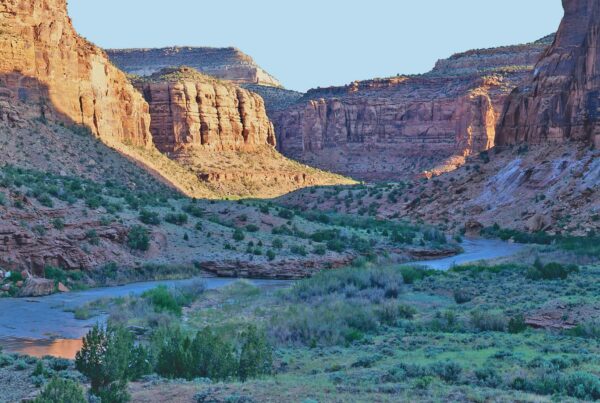Last opportunity to speak out for quiet-use trails in Rico/West Dolores!
Striving for strong protections for the Rico/West Dolores area has been a priority of San Juan Citizens Alliance for nearly 10 years and we will continue our persistence. However, we also need you as a partner in this long, drawn-out battle to protect this superb wild backcountry.
As a refresher, this 245,000-acre travel management area is worthy of our everlasting support with its Lizard Head Wilderness, eight roadless areas, three streams with the Outstanding Waters classification, six cutthroat trout creeks, the headwaters of the Dolores River, and more!
After all these years the San Juan National Forest (SJNF) has moved ever closer to a thorough analysis of all the values and resources connected to this territory, however, they still need to step up and apply adequate protections to truly preserve the wild, quiet and verdant landscape that is the upper Dolores watershed. The SJNF has already “passed judgment” on the trail designations within the two other travel management (TM) landscapes in the Dolores District, the Boggy-Glade and the Mancos-Cortez TM areas. These two areas have become areas of our national forest that are heavily criss-crossed by motorized trails and roads – certainly this shouldn’t be the fate of the entire Dolores District!!
The Rico/West Dolores is a steeper and higher headwaters area of excellent wildlife habitat – a land of quiet forests and tumbling trout streams. Frankly, there is NO NEED for any motorized trails in this area – much of the soils are delicate, the trail gradient is often steep, the streams are in no need of additional sediment and we can assume that elk, deer, bear, mountain lions, beaver, fox, marmots and other creatures are not fond of noisy backcountry motorized intruders. And intruders are exactly what motorcycles are on backcountry trails in this area. There are miles and miles of motorized trails in the two other TM areas and adjacent BLM lands – give some peace and quiet to the Rico/West Dolores area.
There are some human residents of the region as well, most dwell in the “greater metropolitan area” of Rico, population 270. During the SJNF forest planning process, which finished in 2013, the town of Rico and the adjacent lands were designated a “Special Area.” In the forest plan Special Areas are defined by their current characteristics along with a vision for the future, the so-called “Desired Outcomes.” And not surprisingly Rico’s Desired Outcomes reflect what Rico residents desire, and probably most of their visitors as well, that is – quiet. Specifically the forest plan details that “Trails accessing SJNF-administered lands from within town boundaries emphasize non-motorized modes in order to emphasize the community’s quiet-use character.” Certainly this is a crystal clear Desired Condition that should give the SJNF their “direction of travel” per trail designation, they need to be non-motorized trailheads only!!
The SJNF laid out the choices and now it’s our opportunity, even our duty, to impress upon the agency in the name of all the living creatures on the Rico/West Dolores to designate an area with overwhelming quiet! Most of the forest is tracked with roads and motorized trails, asking for one locale with peace and quiet is an entirely reasonable request – write a letter and let ‘em know!! You can utilize the issues and specifics we have outlined in our alert, or just proceed to author your own letter speaking from your direct experiences in the Rico/West Dolores.
This is very likely our last opportunity to provide input in the process – please step up and deliver a message!
Comments were due by August 21st.




Please limit motorized use in this section of the forest. Upper Raman Creek trail is rapidly eroding due to motorized use, more trails will degrade to this condition if rampant motorized use continues. Motorized proponents will claim ” historical use” , but this red herring is based on rather recent expansion of ORVs. The forest can absorb many more quiet users which impact wildlife and each other much less than motorized user whose presence is broadcast by the racket they generate.
Thank you Dave. Please also submit your comment to the Forest Service here: https://sanjuancitizens.org/RWD-trails